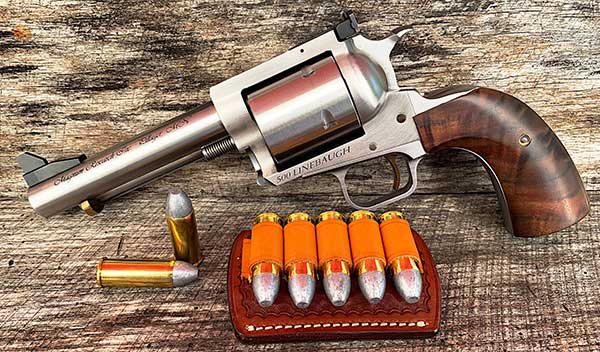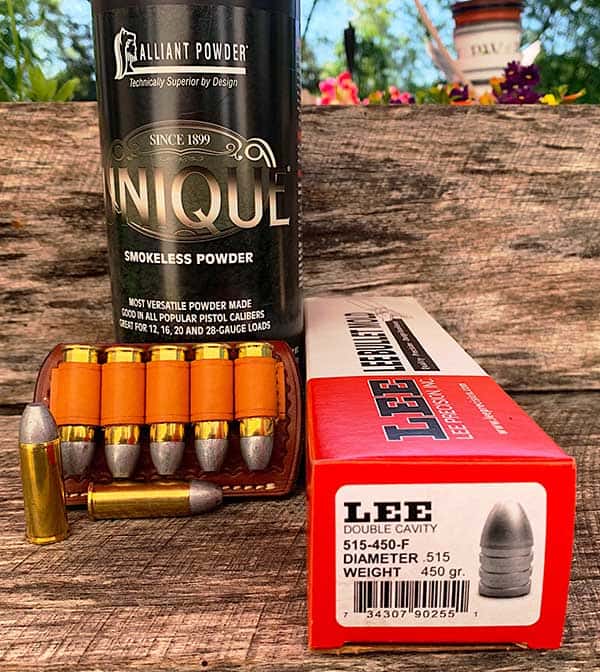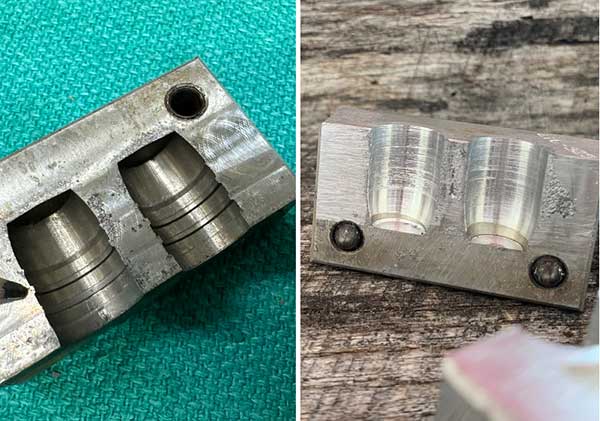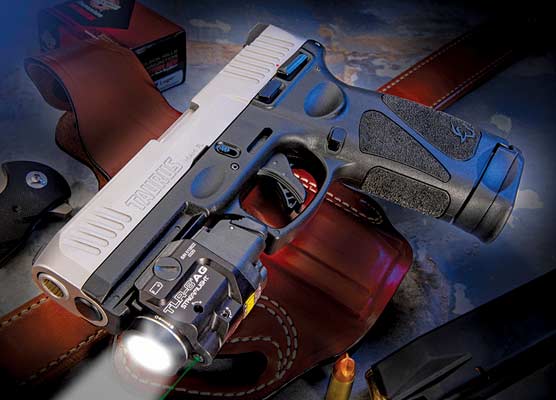“Oddballs” For the .500 Linebaugh
Coloring Outside The Lines Can Be Useful
John Linebaugh was a genius when designing the very cartridges carrying his name. First came the .500 Linebaugh, consisting of a shortened and blown out .348 Winchester cartridge. However, a problem developed when Winchester talked of dropping production of the .348 Winchester. This was before Starline Brass came to the rescue several years later.
So, John being John, he did the next best thing. He came out with the .475 Linebaugh made from cutdown and shortened .45-70 brass, which was plentiful. But the .500 Linebaugh was his baby and, I believe, his favorite cartridge. As he told me a few years ago, the .500 does everything the .475 does at half the pressure. I could never get that statement out of my mind.
Thinking Like John
John really liked the .50-70 Government cartridge and told me tales of Western settlers in his state of Wyoming getting free cases of .50-70 Government ammo from the local fort if they were using it to rid the area of “unfriendly” inhabitants. John wanted a gun capable of .50-70 ballistics in a handier sidearm. Sound familiar?
Why Not?
While looking at the Lee Precision rifle mold chart one day, an idea hit me. Lee makes a .50-caliber .515” .450-grain mold. I thought, surely, I could size it down to .512” for Linebaugh loads. The design is a good replication of original .50-70 ammo, complete with a small nose flat. I ordered mold, then cast and powder coat some slugs with it. In no time at all, I was able to size them to .512” with my Lee Automatic Processing Press (APP).
I assembled some handloads on a Lee Classic Turret Press, using Starline Brass and Hornady dies. I like loading both “light” and “heavy” loads for the bullets I shoot. There is no sense in beating yourself or the gun up when punching paper or blasting rocks.
My light loads consist of 10 grains of 231, and 11 grains of Unique with the Lee 450-grain slug. Heavy loads use 28 grains of H110 and CCI 350 primer. The gun I would be using is a cherished Magnum Research BFR Custom Shop Elmer Keith Commemorative with 5.1” barrel. My results are as follows:
• 10.0 grains 231 WLPP — 870 fps
• 11.0 grains of Unique WLPP — 1,100 fps
• 28 grains of H110 CCI 350 — 1,240 fps
Accuracy was in the 1.5-2.0” range at 25 yards for five shots. The light loads are certainly pleasant to shoot, feeling like moderately heavy .45 Colt loads. The heavy load obviously had more recoil but was very manageable.
Drill Baby Drill
Most of my family are dairy farmers in Pennsylvania. I guess I have some of their farmer traits, in that I won’t throw anything away. It drives my wife nuts, but you never know when something could come in handy. This is a case in point.
I had a Lee 476 325-grain mold with a gas-checked radiused flat-nose design. I wanted to polish out the gas check shank, effectively making it a plain base mold. Long story short … I screwed it up. But I hung onto the mold, figuring I could do something with it one day, and boy, am I glad I did.
Enter Special Projects Editor Roy Huntington. Roy previously made a cutter and some molds for me using a set of Lee blank mold blocks. I miscalculated the length and the bullets dropped at 520 grains. I could use these in my .500 Jeffery rifle for light practice rounds or heavy .500 Linebaugh loads — very heavy Linebaugh loads.
By using the old 325 476 RFN GC mold I molested, Roy used the same cutter and cleaned out the cavities by running the cutter through the cavities. It worked beautifully. Bullets drop out at 380 grains, which is more of what I wanted. You may notice there’s no crimp groove in these cast slugs. Making a cutter of this style is easier without crimp or lube grooves.
Since I powder coat my cast bullets, lube grooves are unnecessary. You can crimp a lead bullet anywhere because when you crimp, you are effectively making a crimp groove in the bullet. My loads for these bullets are as follows:
• 10 grains of 231 WLPP — 835 fps
• 14 grains of Unique WLPP — 1,000+ fps
• 30 Grains of H110 CCI 350 — 1210 fps
These loads shot as good as the Lee 450-grain bullets. That is, in the 1.5-2.0” range for five shots at 25 yards. Extraction was easy on all fired brass, and the barrel did not lead.
Last Word
By no means am I saying misfit bullets are the way to go, but rather, showing you can be innovative in your approach to handloading. Simply sizing down bullets made for another caliber can free you or save you money by using a mold you already have.
For instance, I use an RCBS .416 FNGC mold made for the .416 Rigby, but by sizing the bullets down to .413”, they work in my Ruger #1 .405 Winchester. Don’t worry about screwing something up. It’s usually the lessons we remember the most. And if you do screw something up, don’t fret. There’s usually a way, or another purpose, you can recycle your mistake into something useful … especially if you have a Roy.










